MEEG 681 / MEEG481
Computer Solution of Engineering Problems
Computer Session 12
Outline and Objectives:
- Solve a highly compressible flow in FLUENT
- Study how lift and drag changes with angle of attack
- Study turbulent compressible boundary layer around an airfoil
- Study the location, orientation, and intensity of shock wave.
The problem: Turbulent flow past a transonic airfoil at a non-zero angle of attack.
The mesh was made to cover a very large region, from -20C to +25C in the
x (along-cord) direction, and -30C to +30C in the vertical, where
C = 1 m is the cord length. The origin of the coordinate system is at the nose
of the airfoil.
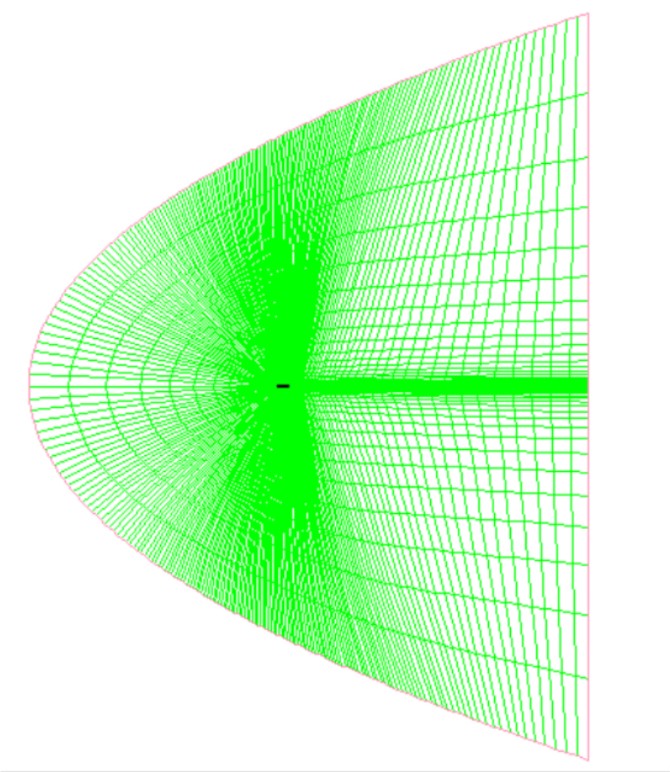

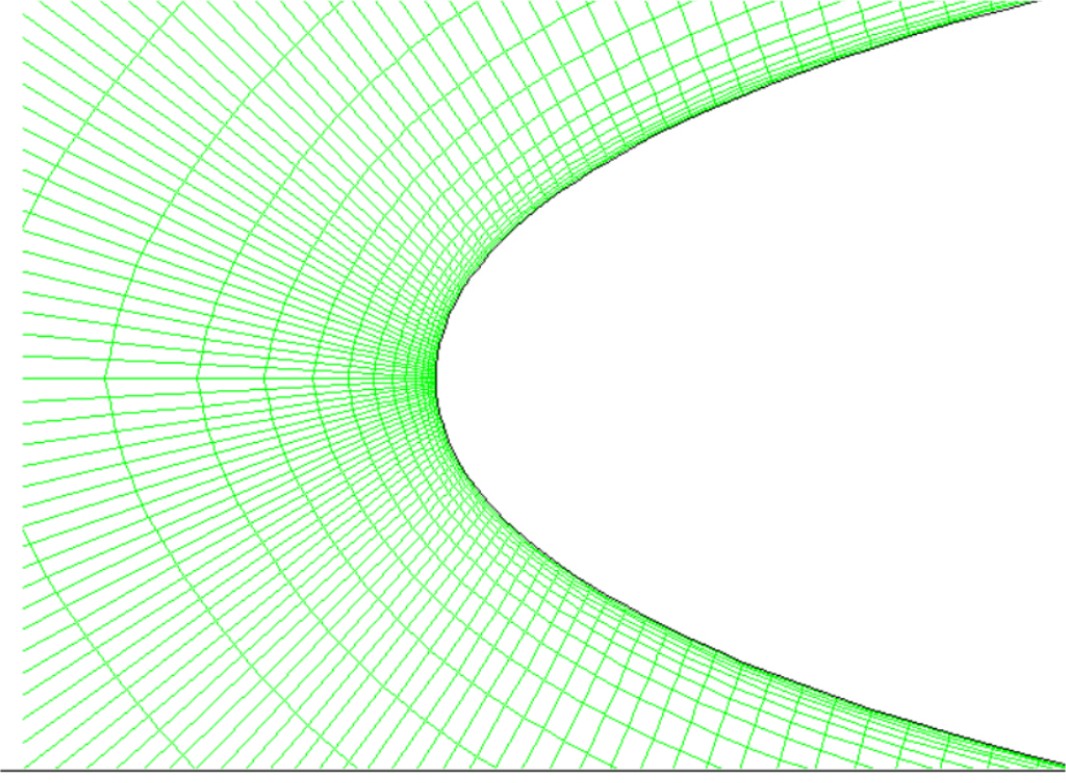

Angle of Attack = 4 degrees:
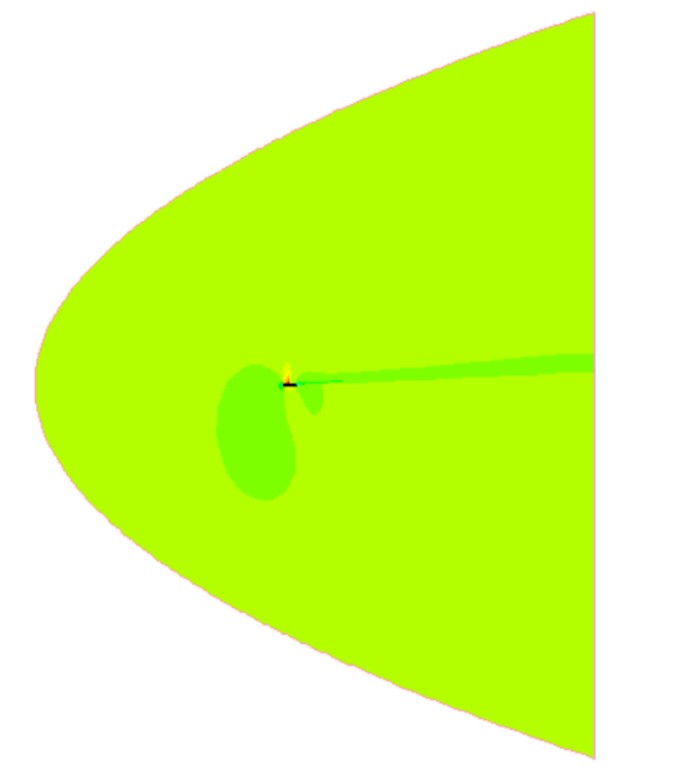
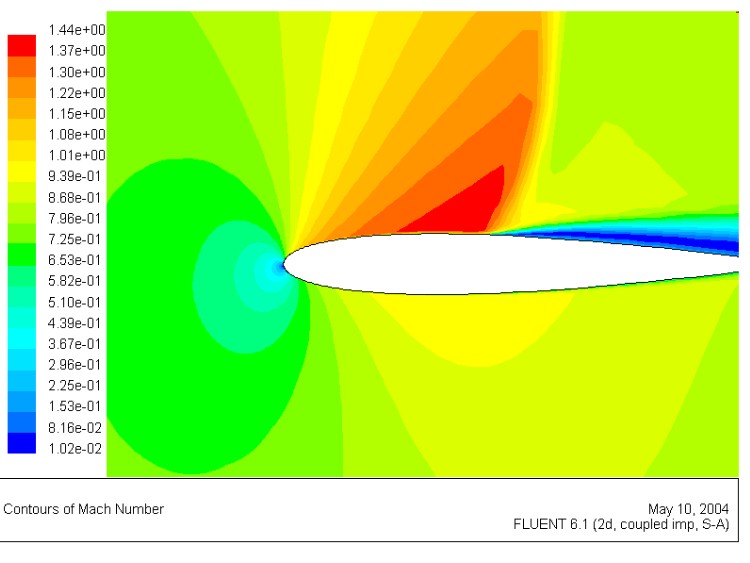
Angle of Attack = 10 degrees:
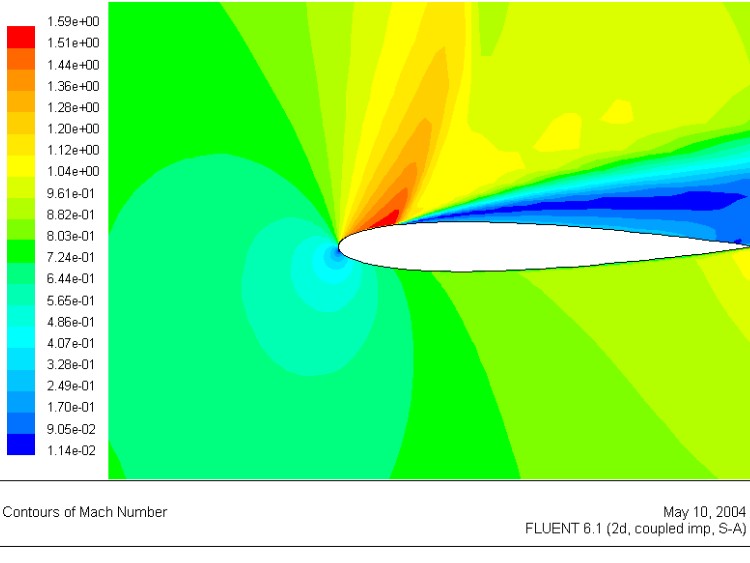
This problem is taken from FLUENT 6.1 Tutorial Guide. See
Modeling External Compressible Flow.
Solution Procedure and boundary conditions:
- Import the mesh.
- Use "coupled" solver with "implicit" formulation.
- Turn on Energy equation.
- Turn on the Spalart-Allmaras turbulence model.
- Use "ideal-gas" as density model and "sutherland" as viscosity material model.
- Set operation pressure to zero.
- For the "pressure-far-field-1" boundary, set Gauge pressure = 101325 Pa,
Mach = 0.8, temp = 300 K, x-component = cos(4) = 0.997564, y-component = sin (4) = 0.069756.
Set turbulence specification method to "Turbulent viscosity ratio" and set ratio = 10,
meaning at far-field, the turbulent viscosity is 10 times material viscosity.
- Solution control: Under-Relaxation factor for modified turbulent viscosity = 0.9;
Courant Number = 5.
- Turn on Solve-Monitor: Drag, Lift, and moment coefficients.
- Double-check to make sure that y+ near the surface is between 30 to 300.
| angle of attack (degree) |
cosine(angle) |
sine(angle) |
C_L |
C_D |
C_M |
y+ check |
| 4 |
0.997564 |
0.069756 |
0.3442 |
0.0527 |
-0.0127 |
10 to 80 |
| 10 |
0.984808 |
0.173648 |
0.5744 |
0.1430 |
0.0141 |
10 to 100 |








